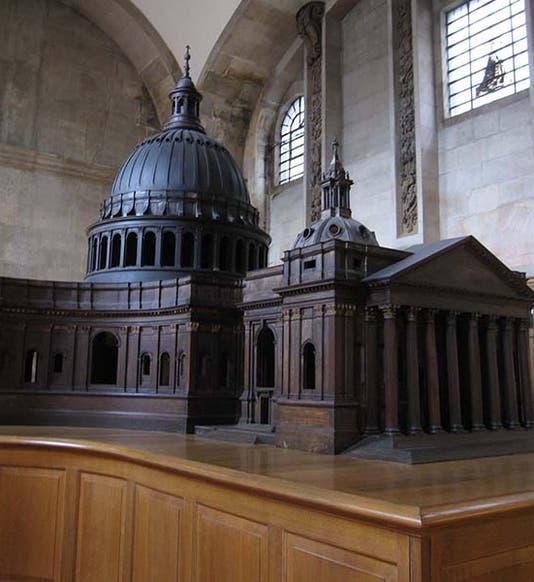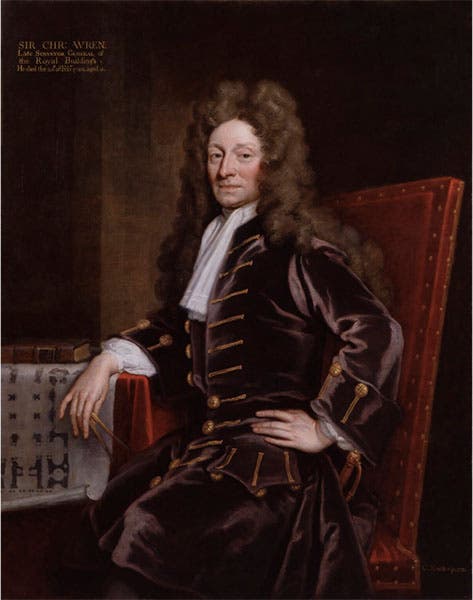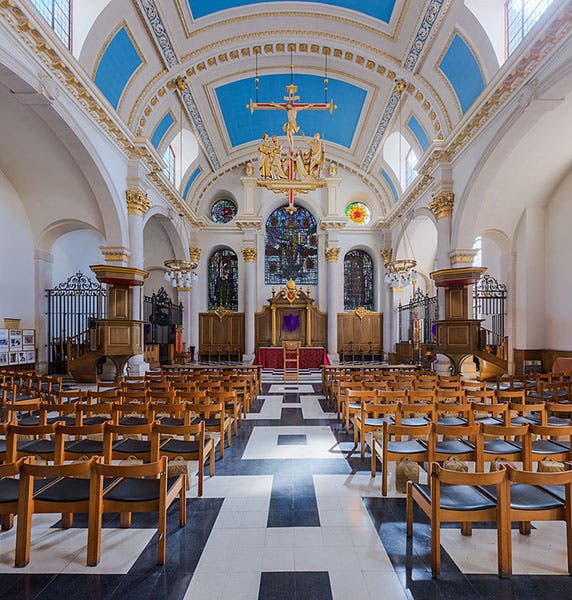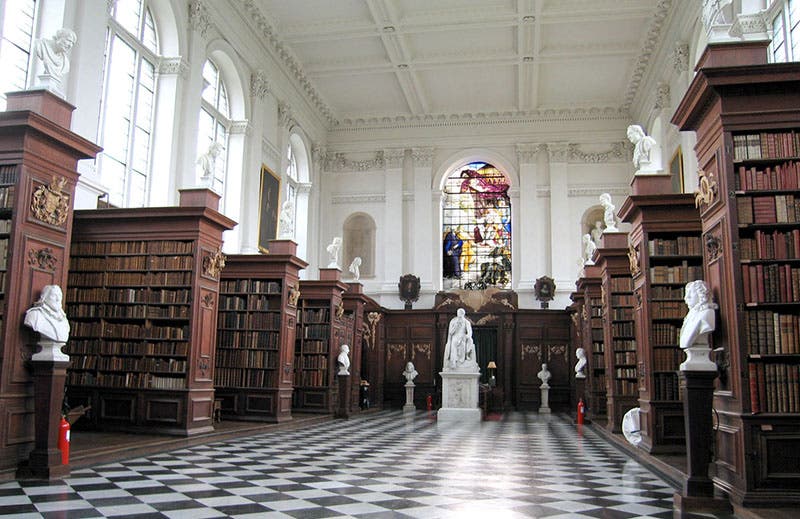Scientist of the Day - Christopher Wren
Christopher Wren, the English architect, was born Oct. 30, 1632. Wren is known as the man who designed and built the new St. Paul’s Cathedral in London, after its predecessor was destroyed in the Great Fire of London in 1666. But in his day, Wren was better known as a natural philosopher, and he was considered by the likes of Christiaan Huygens and Isaac Newton to be one of the most gifted mathematicians of his age. Wren was one of the charter members of the Royal Society of London when it was founded in 1662, and he became President of the Society in 1680.
He was also part of a small discussion group, along with Edmond Halley and Robert Hooke, who in the 1680s were considering the matter of whether the sun exerts a force on the planets, and if so, whether it would be an inverse force, an inverse square force, or some other kind of force. Hooke opted for an inverse square force, but he was unable to predict how the planets would move if this were the case. So Halley went up to Cambridge and asked Isaac Newton how a planet would move under the influence of an inverse square force. Newton had already worked out the answer – an ellipse – and was prompted, with Halley’s encouragement, to begin writing the Principia. So Wren was, in a way, a midwife to the publication of that great work.
n addition to designing and building the new St. Paul’s, Wren also designed and/or supervised the reconstruction of 51 parish churches in London after the Fire, including St. Clement Danes (third image) and St. Mary-le-Bow (fourth image). He also designed the great Library for Trinity College, Cambridge (fifth image). His portrait, like that of Newton, was painted by the great Godfrey Kneller (1711) and hangs in the National Portrait Gallery (second image).
The first image above shows the beautiful wooden model of St. Paul’s that Wren had built before building the full-size version. It is still displayed somewhere in the upper reaches of the cathedral.
Dr. William B. Ashworth, Jr., Consultant for the History of Science, Linda Hall Library and Associate Professor emeritus, Department of History, University of Missouri-Kansas City. Comments or corrections are welcome; please direct to ashworthw@umkc.edu.






![“Aurora Borealis,” hand-colored wood engraving by Josiah Wood Whymper, [Natural Phenomena], plate 2, 1846 (Linda Hall Library)](https://assets-us-01.kc-usercontent.com:443/9dd25524-761a-000d-d79f-86a5086d4774/0245ffcb-b70c-477c-8792-0a73ebd54eb2/Whymper%2011.jpg?w=210&h=210&auto=format&fit=crop)



